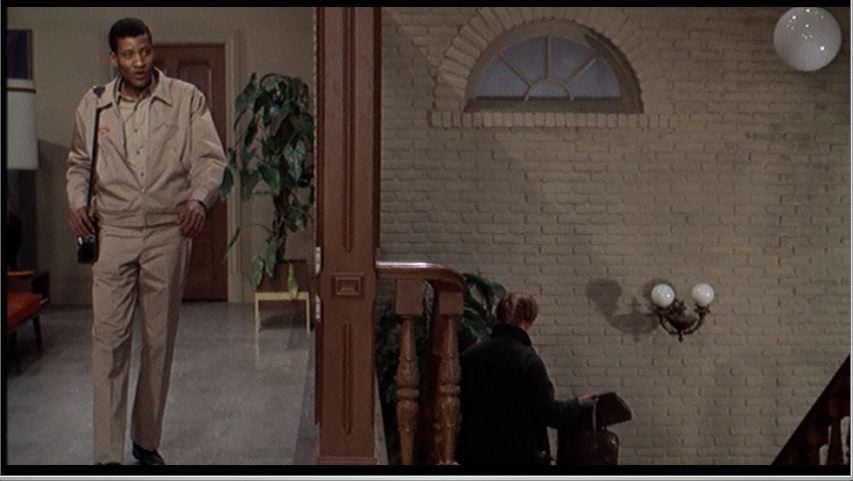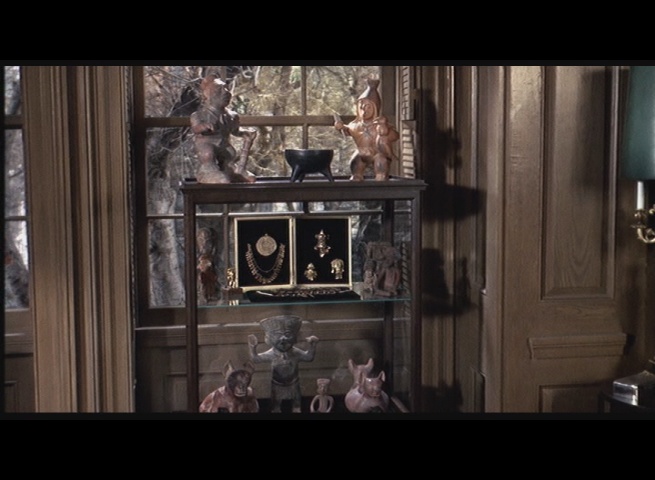Some People are Animals, Too
It is in this continuing spirit of otherness that Marnie carries one of Hitchcock’s precious few glimpses of a nonwhite face. After Marnie burgles Rutland, the camera makes a 180 degree turn to follow her down the stairs and out the door. This highly abnormal sequence of shots effectively divides the set’s rigidly-defined z-space across the camera’s plane. On one side lie the plundered safe and the deaf janitor, in the middle the camera, and on the other side, Marnie descending the stairs – and a black man, emerging from behind a suspiciously tropical office plant. Such jungle imagery complements Mark's collection of Precolumbian art just down the hall. This clever (if offensive) association carries many implications,* but most relevant to us at this point is the notion that Hitchcock lumps Marnie in with a person who is, under the visual language of early cinema, coded as a “savage other.”

